Getting to Kamakura
Tokyo hasn't always been the capital of Japan. The capital used to be Kyoto, which apparently has lots of fantastic stuff, but is a bit too far to visit on a day trip. In fact there are hardly any structures in Tokyo that date to earlier than 1945. This is a problem, since we both wanted to see some old stuff.Luckily we had been advised by the Cambridge University Anglo-Japanese Society that if we were interested in seeing traditional temples and other examples of old Japanese architecture, the place to go was an area a little way outside Tokyo called Kamakura. It turns out that for a brief time, during the Shogun period, Kamakura was the capital. Japan is pretty mountainous, and apparently the rulers often used this as a form of control, forcing their lords to waste money making long and difficult journeys to the capital twice a year. A trip that takes 3 hours by bullet train would have taken 30 hours by a courier with changes of horse and took 3 weeks for a Lord with all his retainers.
We had two options on how to get there. The boring way is going via Tokyo central station straight to the town of Kamakura in the center of the Kamakura area. We chose the slower but more scenic option, the Enoden Line, which went through wooded valleys then along the coast.
The Great Buddha
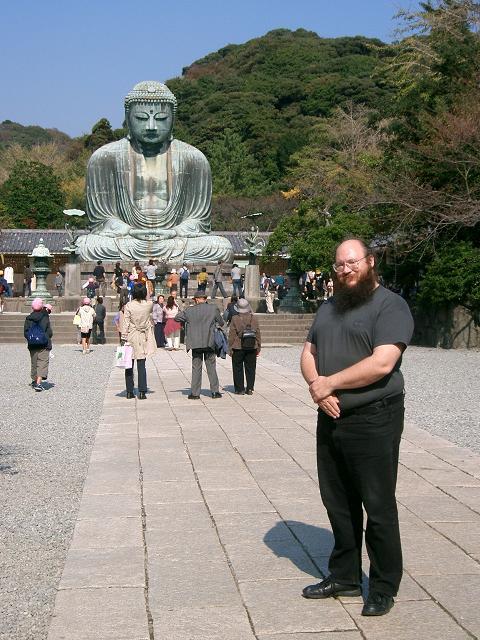
Our first stop was the Daibutsu - a large metal statue of the Buddha.
It used to be set in the middle of a temple but a
tsunami (tidal wave)
hit many centuries ago, destroying everything except the statue which
it left untouched. The statue is hollow, and for 20 yen (that's 10p)
you can get inside via an underground passage. The inside is lit by
the two shuttered windows set high in the back of the statue giving
a slightly strange wing like effect. We wondered if these were required
for something prosaic like temperature balancing, or if there were a
more romantic explanation like the priests keeping a secret lookout.
A brief note on the difference between temples and shrines. Japan has two main religions: Buddhism and Shinto. It was explained to us that most Japanese mix and match, taking the parts they like from both. Thus, occasions requiring luck, such as weddings, get celebrated at Shinto Shrines, where you can invoke the blessings of heros, ancestors and nature spirits. Whereas funerals get conducted at Buddhist Temples because people prefer the Buddhist view of karma and reincarnation to the Shinto view of there being no afterlife. Thus, if you see a graveyard (stone pillars under which the ashes of a family are buried) then it is likely to be a temple; if you see fortune tellers and good luck charms, it is likely to be a shrine.

However things are not quite that simple. In some areas both
a shrine and a temple are built together. We were surprised to see on
our map of the area various places being marked with a
swasticka sign.
Initially we thought this might mark war sites, but it turned out to
be how the locals mark the temples, to help make the difference clear.
Hase Kannon Temple

Kannon is the bodhisattva of mercy and compassion (one who percieves
all) and is often depicted as a many-headed goddess. The Hase Kannon
temple is centered around one building dedicated to Kannon, but contained
bits dedicated to other blessed ones: Jizo, Diakokuten, Benzaiten, and my
favourite bit: the Kyozo.

The Bhoddisatva Jizo is the protector of children. His area is filled with
row upon row of well tended neat small statues. Alas. For each statue there
represents a still birth, miscarriage or abortion. We paid our respects.
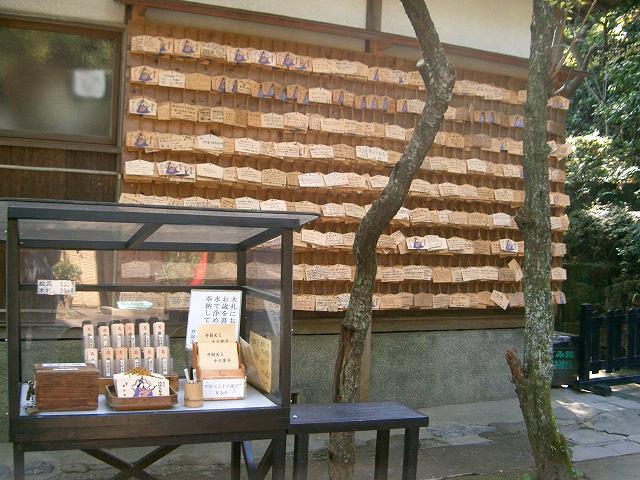
Diakokuten is the god of wealth. His area was filled with wish tablets.
Visitors pay to have a wooden tablet upon which they write their wish then
hang it on a wall. At the end of the year, the priests burn all the tablets
sending the prayers up to the god with the smoke.

Benzaiten is the goddess of beauty. Her area was set deep in a cave filled
with statues carved into walls, and lit with kanji inscribed votive candles.
We entered the cave through a red Torii (a gateway build in the shape of the
bird perch priests used to keep sacrificial birds upon) and then down a low
tunnel. Very atmospheric, and full of elderly women praying for their
daughters to make good marriages.

The Kyozo is a special repository for Sutras (holy works written on special
gold-capped scrolls). This enormous bookcase contained thousands of the
scrolls, and was set on a giant rotating spindle. The belief is that just
by rotating the Kyozo you may acquire the same merit as if you had read all
the Sutras contained therein. Not one to pass up an offer like that, I took
my turn in pushing the Kyozo around, much to Louise's amusement.
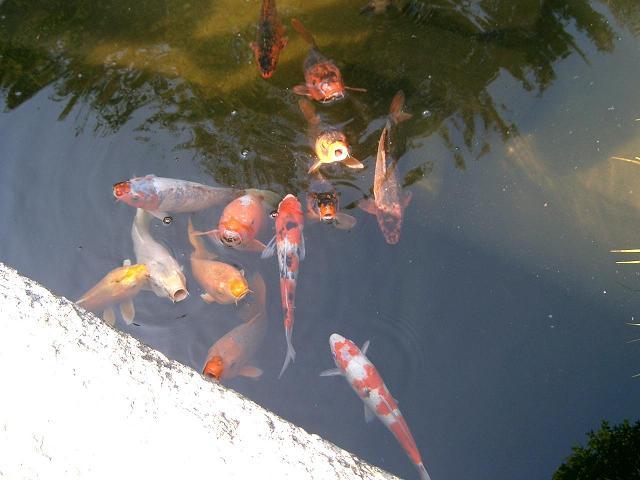
Tokeiji Temple

We visited several other shrines and temples that day, got to hear temple
bells and drums, met chanting monks and were instructed in the intracies
of how to wash at the washing stations before entering the sacred areas.
We saw the Japanese equivalent of the Bayeux Tapestry (in a temple) and
(outside it) the Japanese
equivalent of the sword, Excalibur (or so the vendor claimed).
At each temple we received a highly coloured and stylised ticket receipt
that seemed designed to be collected as proof of pilgrimage; several
routes between the sites are traditional, such as the one that takes
in sites dedicated to all seven of the 'fortunate' gods.
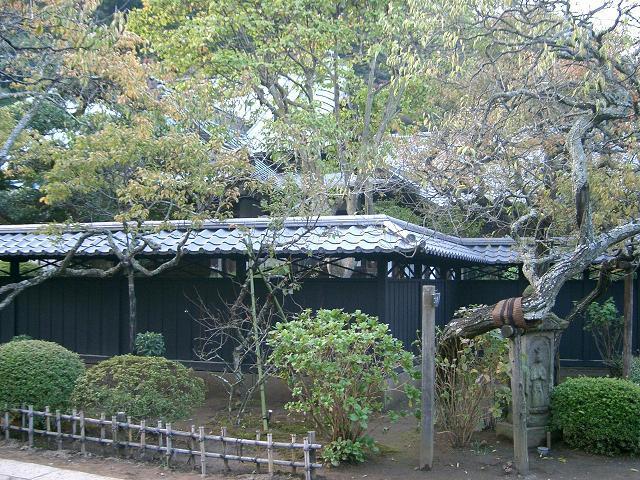
But the last temple we went to was off this beaten track. The Tokeiji
Temple is not one of the main tourist ones. In fact it still seems to
be active in causes connected with its
original purpose, and is the only
one we donated money to. You see, back in 1285, there were only five
nunneries in Japan, one of which was Tokeiji. Now under the law of that
time, if a woman displeased her husband, he was within his rights to
execute her which, as you can imagine, made asking for a divorce rather
a risky business. So eventually a nun, named Kakusan-ni, petitioned the
Shogun who in reply declared Tokeiji to be a safe zone. If a woman on
the run from her husband reached the precints of the temple, she could
stay there safely and, after three years, be granted a divorce.
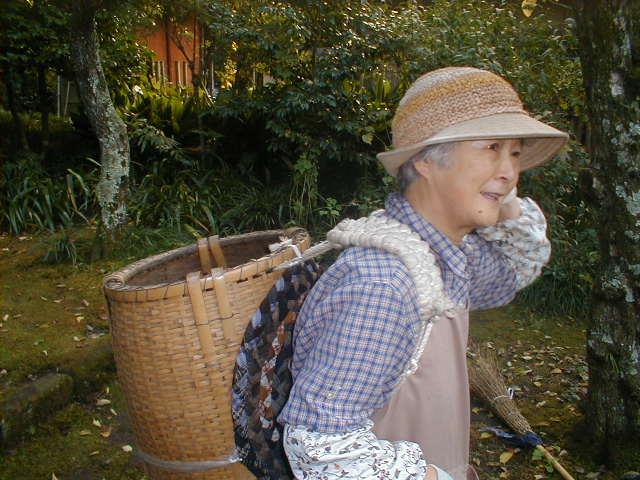
Due to a succession of royal protectors the temple kept this priviledge
through the centuries, even when Emperors replaced Shoguns, until finally
in 1873 the temple law was made universal, protecting all women. Meanwhile
though, tradition had grown up in the surrounding area. Whenever a local
spots a woman in a hurry, she is always kindly directed to Tokeiki, just
in case she is being pursued.
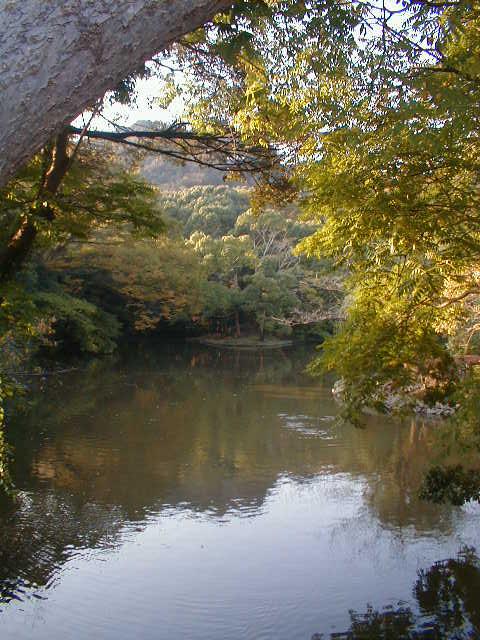
Shinjuku
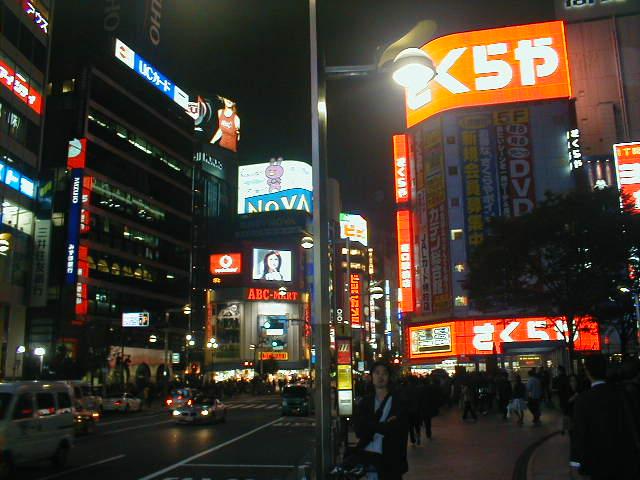
Suffering by now from jetlag we returned to Tokyo and set out to Shinjuku
to have supper. Have you ever seen the film,
Bladerunner? It is the
seminal cyberpunk movie, cool, stylistic, based upon a Philip K. Dick
novel and starring Rutger Hauer so if you havn't seen it, rent it - it's
good. Well, much of the feel of the city portrayed in Bladerunner was
taken from the Shinjuku district of Tokyo, from the sky scrapers and
streets lit like daylight from the neon, to the teeming alleys full of
outdoor food vendors. No androids though (or were there?) :-)
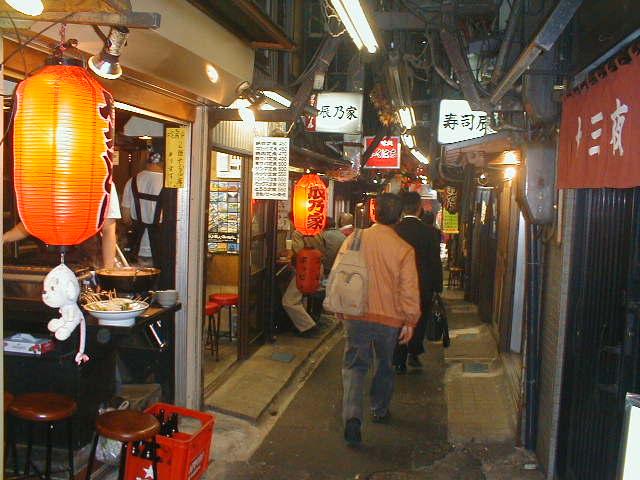
Rush hour in Tokyo doesn't happen until about 9 or 10 O'Clock at night,
because most of the salarymen (male office workers) are expected to
socialise with their co-workers after they leave the office. Crossing
a stream of determined commuters to reach a ticket machine on the far
side of a subway passage is rather like playing
Frogger.
They really
really don't like stopping or letting people past, so you have to take
short steps, and nip through gaps in the traffic.
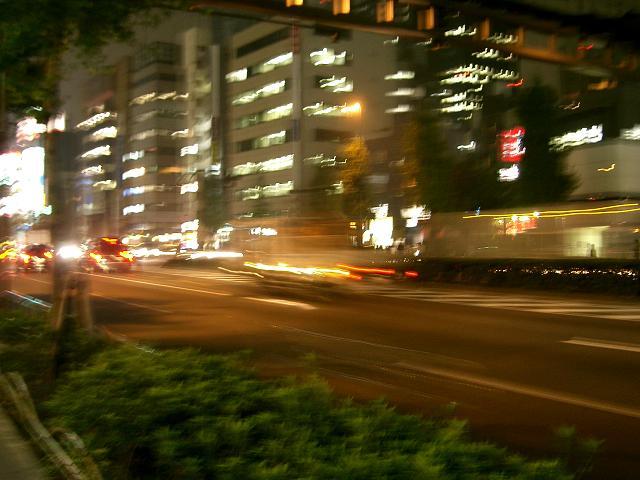
We discovered the hotel's computer room, which had a strict 30 minute
usage quota, and managed to get in contact with a friend of a friend
who moved from Berlin to Tokyo 20 years ago. He dropped by the hotel for a
late night hot chocolate, and gave us some good ideas for the rest of
the week.
[ Top
| Sun
| Mon
| Tue
| Wed
| Thr
| Fri
| Sat
]